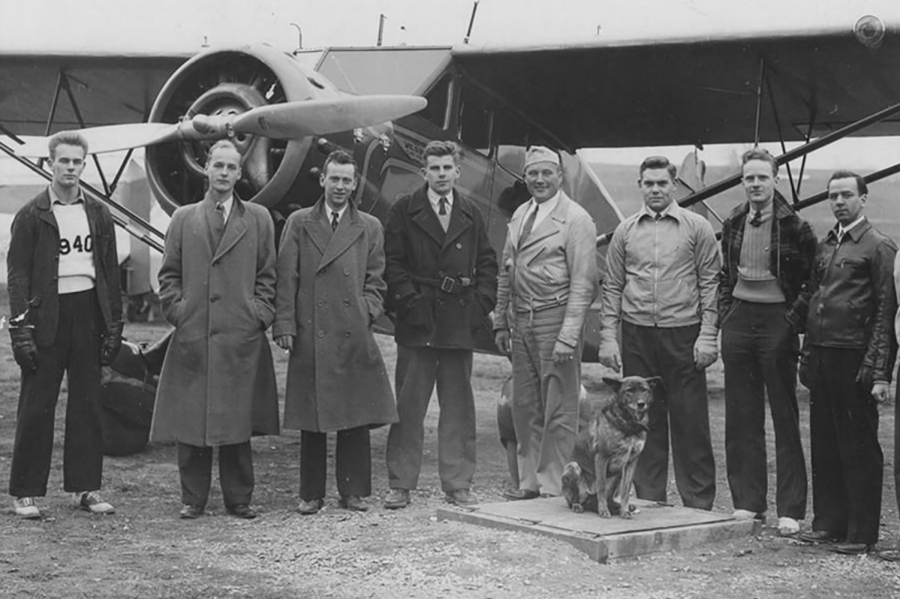Looking Back on the Past: Dickinson and World War II
Dickinson’s legacy as one of the oldest colleges in the nation includes the college’s 32nd College Training Detachment Program, which existed in World War II.
Dickinson was chosen as one of 281 schools to be the home of an army air corps training program due to its “outstanding reputation,” according to the college’s archives. The program consisted of a five-month course that prepared air crew students academically, physically and mentally. The program was established due to the need for more training locations to prepare air pilots for war. The program existed from March 1, 1943 until Jan. 29, 1944, with 2,260 cadets passing through the program.
Dickinson had to undergo many changes for the program to operate spanning academic, physical, social and economic areas.
Mark Fifer, a Dickinson graduate, referenced some of these changes in his senior history seminar thesis from 1999. Fifer mentioned that the college was committed to providing students with a liberal arts education; however, the institution understood this would be challenging while also running a successful Detachment Training Program.
The college had to “readjust its academic program and procedures to meet the educational needs of America at war,” according to the college’s archives. This readjustment involved students having less demanding schedules while still continuing liberal arts courses. Fifer’s thesis also mentioned that the Air Crew students were trained generally in the areas of mathematics, physics and history. As a cadet, however, they also had to complete courses in Infantry Drill, Ceremonies and Inspection, Physical Training and Flight Training. The cadets practiced this training at the former Wilson Airport located in New Kingston, Pa. which is approximately 15 minutes from Dickinson’s campus.
Buildings on campus were physically altered to accommodate the cadets. East College and Conway Hall were converted into cadet barracks. Buildings such as Denny Hall and Tome were enlarged for the instruction of cadets. Old West and Bosler Hall were often utilized as main study spaces and “Old Gymnasium,” a building that used to stand on the corner of Louther and North College streets, was converted into a dining hall for the cadets.
Dickinson students reported having different interactions with the cadets socially. While some students believed the cadets were very integrated into Dickinson’s student life, others felt very far removed from them. Fifer stated that some male Dickinsonians reported feeling a sense of failure and betrayal because many believed they were not doing enough to contribute to the war after seeing the cadets on campus.
Female Dickinsonians, on the other hand, were reportedly “enthralled” by the increase of males on campus, as the college was predominately female. Fifer explained college administrators created strict rules about appropriate relations between cadets and female students as a result of the sharp rise in men on campus. Fifer stated some of these rules included not going into cars with cadets alone and being carefully supervised or chaperoned when with a cadet.
Dickinson also benefitted economically for maintaining the program on campus. There was a sharp decline of student enrollment at Dickinson due to the war; Fifer stated that in 1943 only 195 students were enrolled at the college, raising the tuition price to a higher fee. The college indirectly reaped benefits from the Training Detachment Program as many faculty salaries were subsidized by the government, program operations were paid for and the buildings were renovated, although Dickinson was not intended to gain independent benefits. A contract between the government and the college stated the government provided Dickinson with $81,679.40 to use its facilities, thus keeping the institution alive.
Although it was deemed to be extremely successful, the 32nd College Training Detachment program at Dickinson was terminated on Jan. 29, 1944, due to southern colleges having better flying and transportation conditions for the program to thrive.






